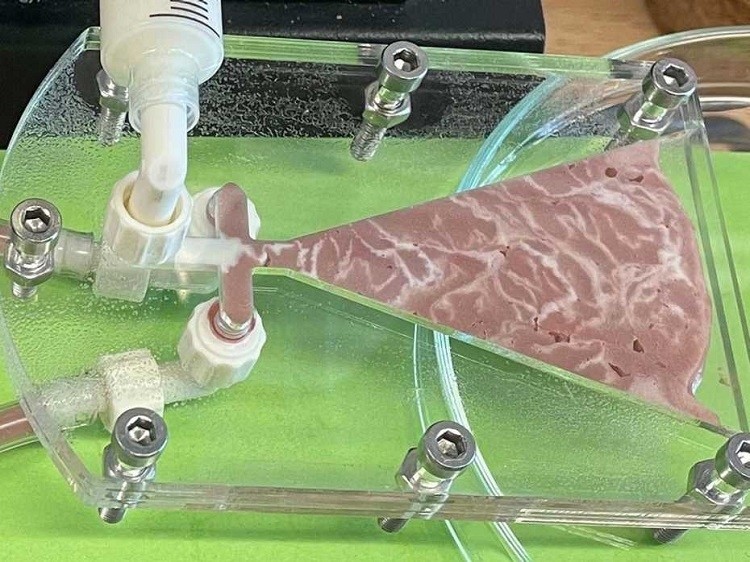
These days, plant-based meat alternatives ranging from burgers to sausages, mince and nuggets, are commonplace in supermarket aisles.
Plant-based steak alternatives, however, are not. Researcher Martin Hofmann from public research university in Switzerland, ETH Zurich, believes he has developed technology that could change the plant-based landscape to include more ‘high-quality’ meat alternatives.
“I’d like to help launch a healthy, environmentally and animal-friendly substitute for high quality meat that tastes like the animal-based original,” said Hofmann.
Pea, carrot, wheat, oil and water
Prior to working in the meat alternative space, Hofmann was studying the flow properties and mixing behaviour of emulsions. During his doctorate, the researcher demonstrated that it is possible to control very thin layers of oil and water as they flow past each other, in order to produce a ‘consistently structured’ emulsion.
Hofmann is transferring this knowledge to plant-based meat alternatives.
According to the researcher, there are two things that make biting into a steak unique: the fibrous texture and the distribution of fat tissue, otherwise known as marbling. “Nature took its time to create bovine muscle tissue. Recreating it requires a great deal of research,” he noted.
To replicate the sought-after ‘meaty’ feel, Hofmann biochemically engineers the structure of plant-based proteins. Specifically, the researcher processes pea protein, together with flavours and spices, to mimic the fibrous structure of meat.
The protein ‘dough’ is forced into a ‘specially designed attachment’, while additional ingredients are added: chopped carrot, pea and wheat fibres, as well as oil and water.
Conventional fat present in meat is replicated with a ‘simple’ oil in water emulsion, to which Hofmann adds vitamins and trace elements. Since the emulsion’s fat content can be reduced ‘significantly’, the researcher says the plant-based steak is not only better for the planet, but better for consumers’ health.
Irregular marbling
To create the irregular marbling effect present in conventional steak, the researcher leveraged the ‘randomness of nature’.
“You have to imitate something highly irregular. Because when we look at one half of a steak, it tells us nothing about what the other half looks like,” he said.
Hofmann developed a method whereby the pea protein and fat are ‘intermingled’ to recreate the typical marbling of high-quality meat. Coining this method ‘advective processing’, he combines two components: two extrusion dyes for the pea protein and one for the fat, and Hofmann’s own software, which controls the merging process.

The researcher is hoping to bring his method to market to serve flexitarian consumers. Rather than produce and sell plant-based steaks himself, however, he plans to work with other companies to produce ‘authentic’ plant-based alternatives with his technology.
“I want to make it a little easier for people to give up cheap, factory-farmed meat.”